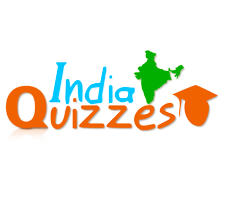1. Swadeshi Movement
2. Gurudwara Guru-ka Bagh Agitation
3. Chittagong Armoury Raid
4. Guruvayur Temple Satyagraha
The correct chronological order of these events is:In which of the following years, Rupee became the standard coin in India? What is the theme of 2017 International Day against Homophobia, Transphobia and Biphobia (IDAHOT)? Which Indian-American personality has won the 2017 Discovery Education 3M Young Scientist Challenge? “Clavicle” in the human body is a ________? What is the India’s rank in the 2017 Global Human Capital Index (GHCI)? GK quiz set 155 – gk question answer for IAS exam to score good in test for government jobs. GK quiz with options and answers.
- Punjab
- Haryana
- Maharashtra
- Madhya Pradesh
Explanation:
The Maharashtra government has approved Rs. 250-crore cloud seeding programme to produce adequate rain because of droughts over the Vidarbha region. The programme would be coordinated by the Indian Institute of Tropical Meteorology. It will be the first controlled experiment to quantify the extent to which clouds form water drops large enough to make rain. For their experiment, weather scientists will fly will fly two aircraft and spray dry ice and silver iodide on 100 clouds and compare them with 100 unseeded clouds. Ground radar will track the clouds and verify which ones contributed rain and by how much. The programme will account for the natural variability of the monsoon.
The 56th raising day of the Indo Tibetan Border Police (ITBP) has celebrated on which date?
- October 23
- October 21
- October 24
- October 22
Explanation:
The Indo Tibetan Border Police (ITBP) has celebrated its 56th raising day on October 24, 2017. The ITBP guards 3488 KMs long borders in the Himalayas on the BOPs at altitudes ranging from 9K to 18.7 K ft. Apart from border guarding, the Force is also deployed for Anti-Naxal Operations and other Internal Security duties. It is one of the five Central Armed Police Forces (CRPF) of India, raised on 24th October in 1962, under the CRPF Act, in the wake of the Sino-Indian War of 1962.
- Non-Co-operation Movement
- Civil Disobedience Movement
- Quit India Movement
- Champaran Satyagraha
- Introduction of Aramic form of writing
- Opening of a new sea route
- Promotion to Indo-Iranian trade
- All of the above
1. Swadeshi Movement
2. Gurudwara Guru-ka Bagh Agitation
3. Chittagong Armoury Raid
4. Guruvayur Temple Satyagraha
The correct chronological order of these events is:
- 1-2-3-4
- 3-4-2-1
- 4-3-2-1
- 3-2-4-1
In which of the following years, Rupee became the standard coin in India?
- 1806
- 1835
- 1852
- 1816
Explanation:
1806 is known for adoption of the silver standard,
1816 is known for adoption of Paper currency,
1835 is known for adoption of Rupee as Standard coin,
1841 is known for a fruitless attempt of introducing the coins in Gold,
- Mental health
- Childhood memories
- Families
- Join Hands
Explanation:
The International Day against Homophobia, Transphobia and Biphobia (IDAHOT) is observed every year on May 17 to raise awareness of LGBT rights violations and stimulate interest in LGBT rights work worldwide. The 2017 theme “families” focuses on the role of families in the well-being of lesbian, gay, bisexual, transgender and intersex (LGBTI) people and respect of the rights of LGBTI families.
Which Indian-American personality has won the 2017 Discovery Education 3M Young Scientist Challenge?
- Mrinali Kesavadas
- Rohit Mital
- Deepika Kurup
- Gitanjali Rao
Explanation:
Indian-American Gitanjali Rao has won the 2017 Discovery Education 3M Young Scientist Challenge for her prototype water lead contamination detector ‘Tethys’. The sensor-based device detects the quality of water and shares the results to a mobile application via bluetooth. The aim of the competition, open to citizens of the US who are enrolled from Class 5 to 8, is to identify a solution to an everyday problem that directly impacts either the contestant or the global population. The winner of the competition is awarded $25,000 along with the title of ‘America’s Top Young Scientist 2017’.
“Clavicle” in the human body is a ________?
- collar bone
- rib
- upper limb bone
- Lower limb bone
What is the India’s rank in the 2017 Global Human Capital Index (GHCI)?
- 105th
- 103rd
- 118th
- 121st
Explanation:
India has been ranked 103rd out of 130 nations at the 2017 Global Human Capital Index (GHCI). The list compiled by Geneva-based World Economic Forum (WEF) takes into account ‘the knowledge and skills people possess that enable them to create value in the global economic system” to measure the ‘human capital’ rank of a country. The list is topped by Norway, Finland, Switzerland and United States. The report measures 130 countries against four key areas of human capital development; Capacity (determined by past investment in formal education), Deployment (accumulation of skills through work), Development (continued upskilling and reskilling of existing workers) and Know-how (specialised skills-use at work).



